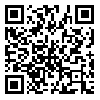Volume 14, Issue 1 (5-2021)
ijhe 2021, 14(1): 67-82 |
Back to browse issues page
Download citation:
BibTeX | RIS | EndNote | Medlars | ProCite | Reference Manager | RefWorks
Send citation to:



BibTeX | RIS | EndNote | Medlars | ProCite | Reference Manager | RefWorks
Send citation to:
Abdi M, Azimi Pirsaraei S R, Mohammadizadeh M R. Evaluation of solar ultraviolet radiation in Zanjan city using the ultraviolet index. ijhe 2021; 14 (1) :67-82
URL: http://ijhe.tums.ac.ir/article-1-6522-en.html
URL: http://ijhe.tums.ac.ir/article-1-6522-en.html
1- Department of Occupational Health Engineering, School of Public Health, Zanjan University of Medical Sciences, Zanjan, Iran
2- Department of Occupational Health Engineering, School of Public Health, Zanjan University of Medical Sciences, Zanjan, Iran ,azimi@zums.ac.ir
3- Superconductivity and Supermaterials Research Laboratory, Department of Physics, University of Tehran, Tehran, Iran
2- Department of Occupational Health Engineering, School of Public Health, Zanjan University of Medical Sciences, Zanjan, Iran ,
3- Superconductivity and Supermaterials Research Laboratory, Department of Physics, University of Tehran, Tehran, Iran
Abstract: (1279 Views)
Background and Objective: Monitoring the amount of ultraviolet radiation from sunlight can provide a basis for assessing people's exposure, raise public awareness and warn people against this radiation. Measuring the sun's ultraviolet index over a working period is an accurate choice to achieve this goal.
Materials and Methods: In this study, the amount of solar UV index in one of the outdoor locations of Zanjan city was measured using Solarmeter model 5.6 UV index meter for one year period. Measurements were performed from 9 am to 5 pm every 30 minutes in direct sunlight in even days for one year period (2018-2019). Finally, the results were analyzed using Excel software.
Results: The highest value of the maximum daily UV index was related to July, with an average value of 11.87 ± 0.649; while, the lowest value of the maximum daily UV index obtained in January, with an average value of 2.23 ± 0.944. In most months of the year, except for late November, December, January and cloudy days, the average value of the maximum daily UV index around noon exceeds the UV index alert threshold set by the World Health Organization (WHO). Even for the safe time period during spring and summer, the average UV index can exceed the UV index warning threshold.
Conclusion: Determining the intensity of the sun's hourly UV radiation is important and necessary to increase the peoples’ and workers’ awareness working in the open environment, as well as to plan for protective measures in any place, especially in Zanjan.
Materials and Methods: In this study, the amount of solar UV index in one of the outdoor locations of Zanjan city was measured using Solarmeter model 5.6 UV index meter for one year period. Measurements were performed from 9 am to 5 pm every 30 minutes in direct sunlight in even days for one year period (2018-2019). Finally, the results were analyzed using Excel software.
Results: The highest value of the maximum daily UV index was related to July, with an average value of 11.87 ± 0.649; while, the lowest value of the maximum daily UV index obtained in January, with an average value of 2.23 ± 0.944. In most months of the year, except for late November, December, January and cloudy days, the average value of the maximum daily UV index around noon exceeds the UV index alert threshold set by the World Health Organization (WHO). Even for the safe time period during spring and summer, the average UV index can exceed the UV index warning threshold.
Conclusion: Determining the intensity of the sun's hourly UV radiation is important and necessary to increase the peoples’ and workers’ awareness working in the open environment, as well as to plan for protective measures in any place, especially in Zanjan.
Type of Study: Research |
Subject:
General
Received: 2021/04/5 | Accepted: 2021/07/26 | Published: 2021/11/15
Received: 2021/04/5 | Accepted: 2021/07/26 | Published: 2021/11/15
Send email to the article author
| Rights and Permissions | |
 |
This work is licensed under a Creative Commons Attribution-NonCommercial 4.0 International License. |





